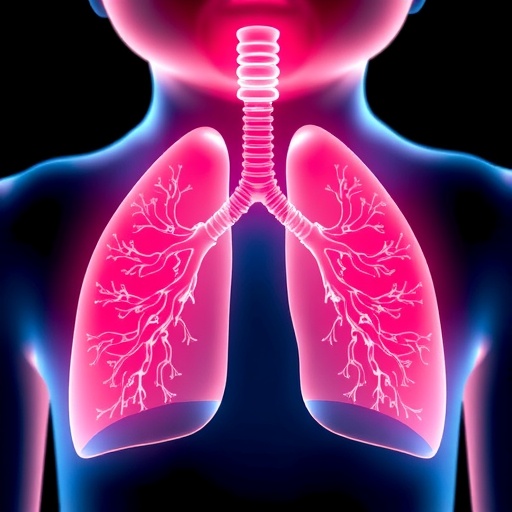Medication-Induced Lung Disease in Children: A Silent Threat
In recent years, the medical community has witnessed a concerning rise in the diagnosis of lung diseases linked to medication in pediatric patients. Research authored by Schapiro, Ruff, and Guillerman highlights a critical yet often overlooked consequence of pharmaceutical therapy in children. This study sheds light on the nature, symptoms, and management of medication-induced lung diseases, aiming to raise awareness among healthcare professionals, parents, and caregivers about this potential risk.
The lungs are integral organs, crucial for respiration and providing oxygen to the bloodstream. When medications cause adverse reactions, they can compromise lung function and overall health. The challenge lies in the complexity of interpreting these reactions, as symptoms can often masquerade as typical childhood illnesses. This reality makes early recognition and intervention imperative for preserving lung health in young patients.
In the study, researchers analyzed various medications that are commonly prescribed to children, identifying several culprits known to induce respiratory complications. Non-steroidal anti-inflammatory drugs (NSAIDs), beta blockers, and some antibiotics were particularly noted for their potential to provoke lung diseases. The doctors emphasized that while these medications are pivotal in treating various conditions, understanding their side effects is equally vital.
The manifestation of medication-induced lung disease can be diverse, with symptoms ranging from persistent cough and wheezing to more severe presentations, including shortness of breath and respiratory distress. Many healthcare providers may inadvertently attribute these symptoms to chronic conditions like asthma or other infections, underscoring the need for a more systematic approach to diagnosing lung issues that might result from pharmacological treatments.
One of the most striking aspects of this research is the varying responses among children taking the same medication. Genetic differences, underlying health conditions, and environmental factors can influence how children react to drugs, leading to a spectrum of potential side effects. This variability poses a significant challenge for practitioners who must tailor their treatment strategies to minimize risks while maximizing therapeutic benefits.
Parental awareness is another crucial element in combating medication-induced lung issues. The research advocates for proactive communication between healthcare providers and caregivers. Parents should be educated about possible side effects, signs to watch for, and the importance of reporting any unusual respiratory symptoms promptly. Enhanced vigilance will foster a collaborative environment between parents and doctors, potentially mitigating the progression of lung conditions before they become critical.
Another important facet of this study is the urgent need for improved pharmacovigilance in pediatric medicine. Current reporting systems often fall short when it comes to tracking adverse drug reactions in children, who may not always present with the same symptoms as adults. The researchers emphasize the need for a comprehensive database that captures medication side effects in younger populations to better inform prescribing practices.
Educators and school health professionals also play a pivotal role in recognizing and addressing medication-induced lung disease. Training personnel in schools to identify respiratory issues related to medication can create an additional layer of support for children outside the clinical setting. By fostering awareness within educational institutions, children can receive timely interventions, whether through the empowerment of school nurses or modification of medication regimens based on observed symptoms.
The implications of this research are significant for public health. With the increasing prescription of medication among children, understanding the potential consequences on lung health is vital. The study calls for a concerted effort among pediatricians, pharmacists, and public health officials to implement guidelines that ensure the safe prescribing of medications, particularly for those children with pre-existing respiratory conditions.
As the landscape of pediatric medicine continues to evolve, it is crucial for all stakeholders in child health to remain vigilant about the potential risks medication poses to young patients’ lungs. Addressing these issues requires a multifaceted approach centered on education, communication, and research. Moreover, ongoing studies like that by Schapiro and his colleagues can pave the way for developing protocols that balance the benefits of pharmacotherapy against the risks of lung disease.
In conclusion, while medication will always play an essential role in treating various pediatric disorders, acknowledging the possibility of medication-induced lung disease is paramount. Through heightened awareness, better reporting systems, and collaborative efforts among healthcare providers and families, we can strive to protect the lungs of the younger generation. The stakes are high, but the power to make a difference lies in our hands.
By promoting a culture of accountability and knowledge, we can ensure that every child receives not only effective treatment but also the best possible care, safeguarding their respiratory health for the future.
Subject of Research: Medication-induced lung disease in children
Article Title: Medication-induced lung disease in children
Article References:
Schapiro, A., Ruff, K. & Guillerman, R. Medication-induced lung disease in children. Pediatr Radiol (2025). https://doi.org/10.1007/s00247-025-06420-1
Image Credits: AI Generated
DOI: 25 November 2025
Keywords: medication-induced lung disease, pediatric health, respiratory complications, pharmacology, parental awareness, pediatric medicine, public health.
Tags: adverse drug reactions in childrenantibiotics causing lung problemsbeta blockers and respiratory issuescaregiver education on medication side effectschildhood lung health awarenessearly recognition of lung disorders in childrenhealthcare professionals and pediatric caremanaging medication-induced lung conditionsMedication-induced lung disease in childrennon-steroidal anti-inflammatory drugs and lungspediatric respiratory complicationspharmaceutical therapy risks for kids





